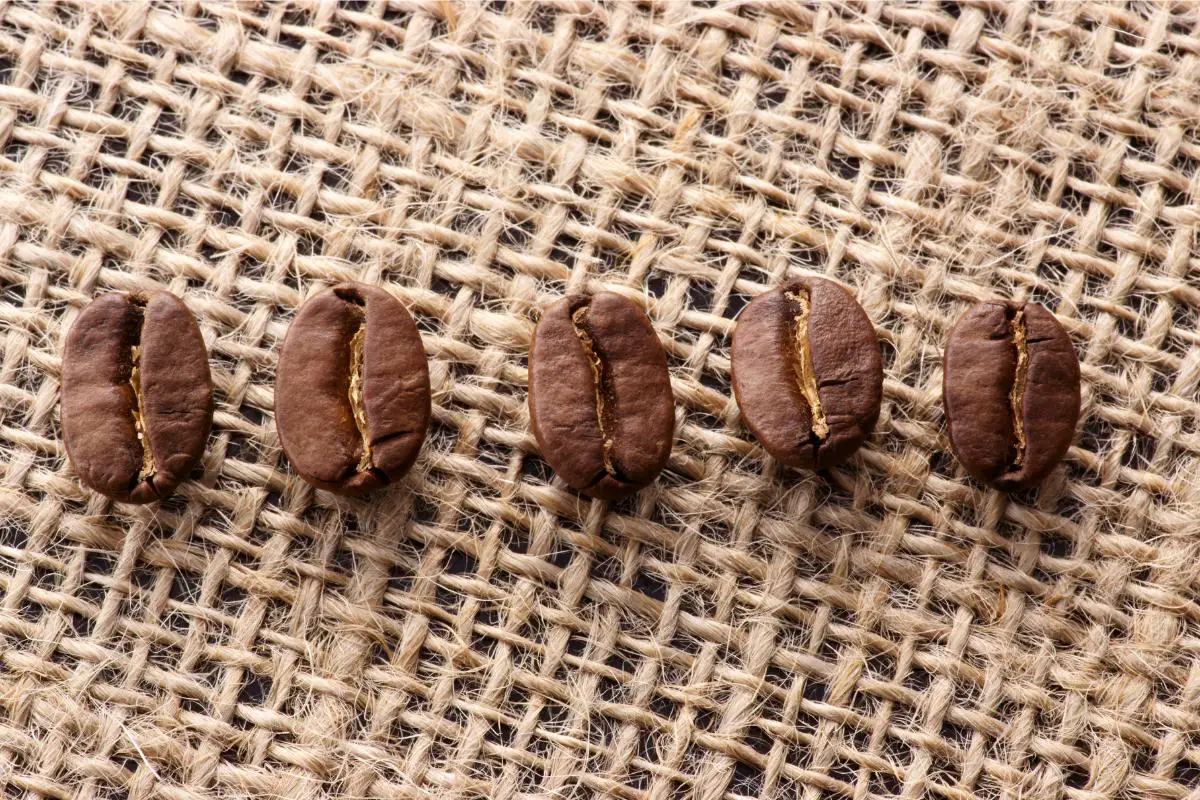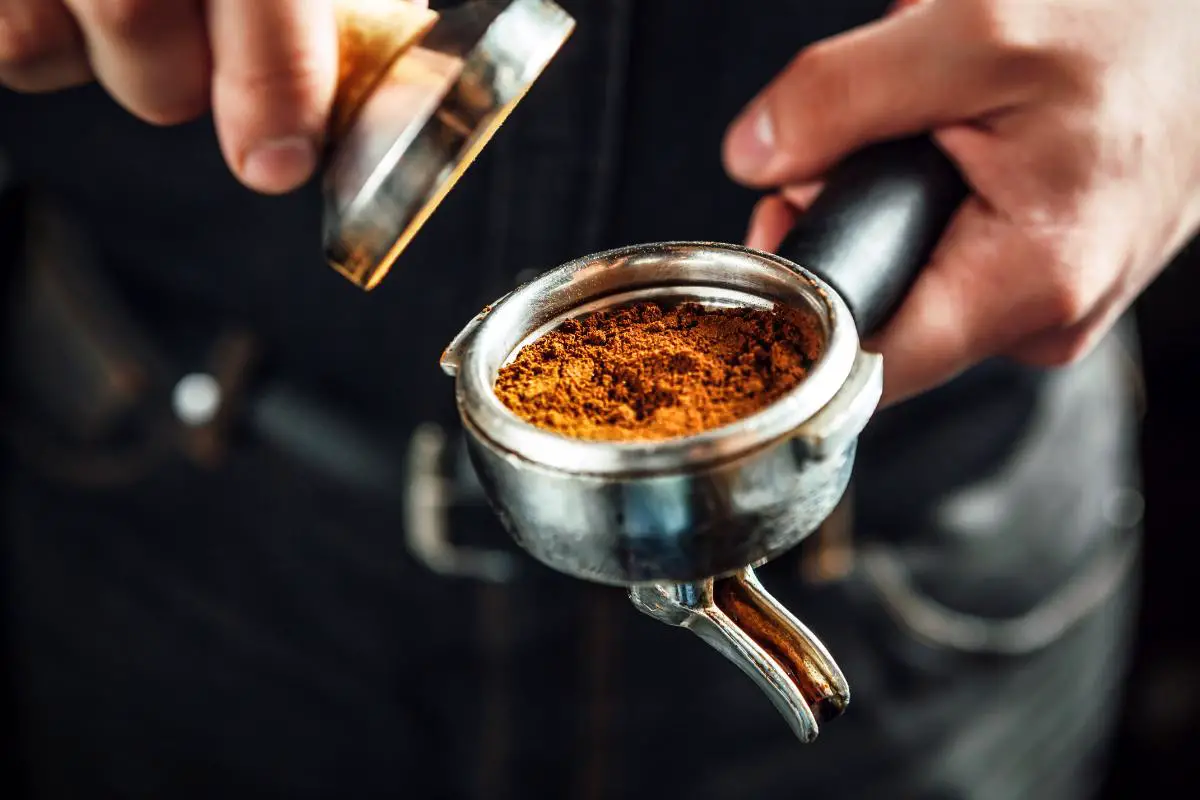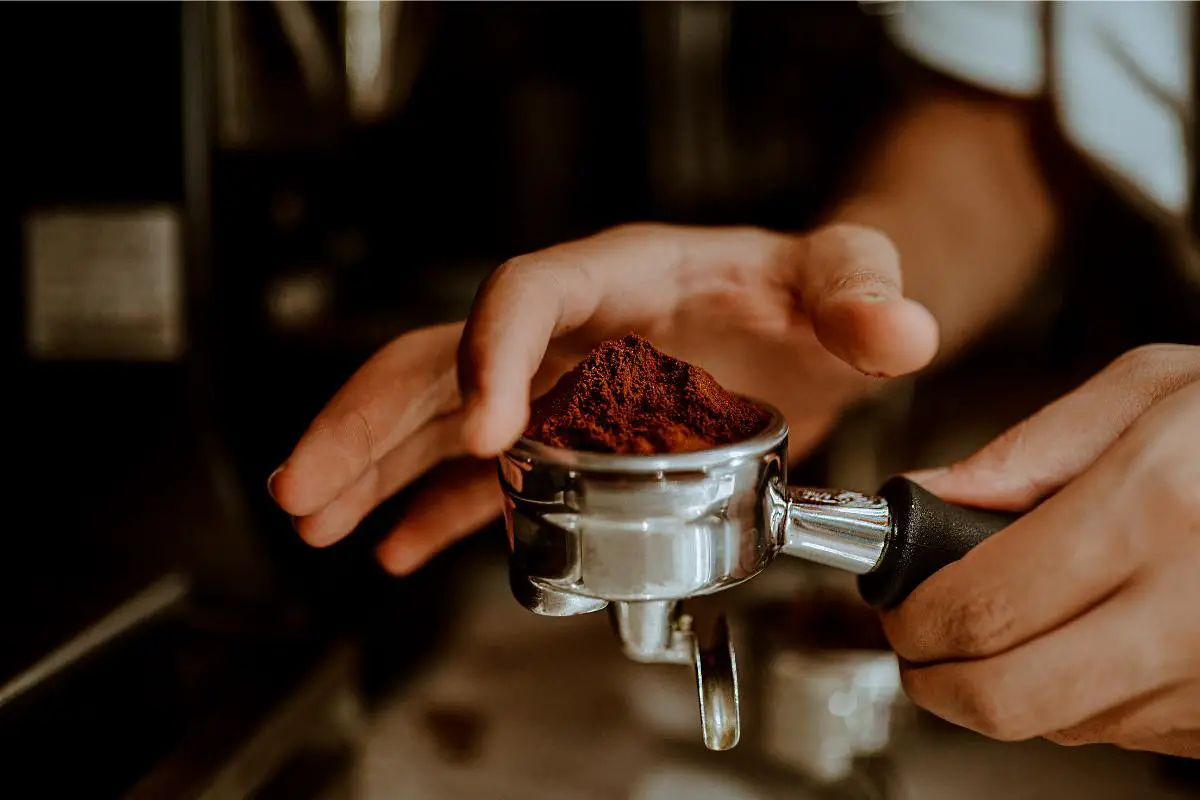Coffee is not only a beloved beverage but also a source of inspiration for various innovations.
One such innovation is coffee fabric, a sustainable and versatile material that has gained significant popularity in recent years.
In this article, we will explore the captivating story of coffee fabric, from its creation to its growing demand across different industries.
Table of Contents
What is Coffee Fabric?
Coffee fabric is a unique textile made from recycled coffee grounds and other natural fibres.
It combines the desirable characteristics of both coffee and natural fibres, resulting in a fabric that is not only environmentally friendly but also highly functional.
The process of creating coffee fabric involves extracting oil from used coffee grounds, which is then mixed with a polymer to create a yarn.
This yarn is woven into the fabric, which can be used for a wide range of applications.
History of Coffee Fabric
The origins of coffee fabric can be traced back to the early 2000s when researchers began experimenting with innovative ways to repurpose coffee grounds.
Initially, coffee grounds were used as fertilizer or thrown away as waste, however, scientists discovered that the oil extracted from coffee grounds could be transformed into a textile material with exceptional properties.
Over time, advancements in technology and manufacturing processes allowed for the mass production of coffee fabric.
It gained attention in the fashion industry, where designers and brands started incorporating this unique textile into their collections.
As coffee fabric became more widely recognized, its popularity extended beyond the fashion realm.

What Are The Benefits of Coffee Fabric?
Comfort and Feel
Coffee fabric offers a unique texture and feels that adds a natural and earthy touch to clothing and textiles. Its slightly coarse texture can provide a distinct tactile experience, appealing to those who appreciate a more rustic or organic feel in their fabrics.
Sustainability
Coffee fabric is an environmentally friendly choice. By repurposing coffee grounds, it reduces waste and promotes a circular economy. This sustainable approach helps to minimize the environmental impact of the coffee industry and contributes to a greener future.
Moisture-Wicking Properties
Coffee fabric has inherent moisture-wicking properties, meaning it efficiently absorbs moisture and keeps the wearer dry and comfortable. This feature is particularly beneficial in athletic wear, as it helps to regulate body temperature during physical activities.
Odour Resistance
Coffee fabric naturally has odour-resistant properties, making it an excellent choice for activewear and clothing that may be worn for extended periods. The fabric’s ability to inhibit odour-causing bacteria helps to keep the garments fresh and odour-free, even after intense workouts or outdoor activities.
UV Protection
Coffee fabric offers natural UV protection due to the presence of coffee grounds. It can help shield the wearer from harmful ultraviolet (UV) rays, providing an additional layer of protection against sunburn and potential skin damage.
Breathability
Coffee fabric promotes breathability, allowing air to circulate through the fabric and keeping the wearer cool and comfortable. This makes it an ideal choice for warm-weather clothing, activewear, and outdoor gear where ventilation is important.
Eco-Friendly Material
Coffee fabric is often blended with other sustainable fibres such as organic cotton or bamboo, further enhancing its eco-friendly properties. These natural fibres are renewable and biodegradable, contributing to a more sustainable and responsible textile choice.
Unique and Distinctive
Coffee fabric offers a distinctive appearance that sets it apart from conventional textiles. Its speckled or marled texture, derived from the presence of coffee grounds, adds a visually interesting element to clothing and home textiles, making them stand out in the crowd.
Innovative and Cutting-Edge
The use of coffee grounds in textile production represents an innovative and cutting-edge approach to sustainable fashion. By embracing coffee fabric, individuals can showcase their commitment to environmental consciousness and support the development of new and exciting materials.
Moisture Management
Coffee fabric’s moisture-wicking properties extend to moisture management. It effectively pulls moisture away from the skin, helping to regulate body temperature and prevent discomfort caused by excessive perspiration.
What Are The Disadvantages of Coffee Fabric?
While coffee fabric offers numerous advantages, it’s important to also consider its potential disadvantages. Here are some potential drawbacks of coffee fabric:
Limited colour options
Coffee fabric tends to have a more limited colour palette compared to conventional textiles. The process of extracting oil from coffee grounds and transforming it into fabric can affect the range of available colours. As a result, the colour options for coffee fabric may be more subdued or earthy in tone, which may not suit everyone’s preferences.
Durability concerns
Coffee fabric may have lower durability compared to some traditional textiles. The process of recycling coffee grounds and blending them with other fibres can result in a fabric that is not as strong or resistant to wear and tear. While efforts are made to enhance the strength and durability of coffee fabric, it may still be more prone to pilling or fraying over time.
Limited availability
Although the popularity of coffee fabric is growing, it may still be relatively less available compared to conventional textiles. This limited availability can affect the accessibility and affordability of coffee fabric for consumers. It may be more challenging to find a wide variety of coffee fabric products or options in the market.
Sourcing challenges
The production of coffee fabric relies on the availability of used coffee grounds. The collection and sourcing of a sufficient amount of coffee grounds may pose logistical challenges, especially on a larger scale. Dependence on a consistent supply of coffee grounds may also be influenced by factors such as coffee consumption trends and industry partnerships.
Allergies and sensitivities
While coffee fabric is generally considered hypoallergenic, individuals with specific allergies or sensitivities to coffee may experience discomfort or skin reactions when in direct contact with coffee fabric. It’s important for those with known allergies or sensitivities to test the fabric on a small area of skin before using it extensively.
It’s crucial to note that the mentioned disadvantages are not necessarily prevalent or severe.
They are potential considerations to keep in mind when evaluating coffee fabric as a textile choice.
The overall assessment of coffee fabric should weigh the disadvantages against its numerous benefits and align with individual preferences and needs.

Applications of Coffee Fabric
Coffee fabric has found its way into numerous industries due to its versatile nature. In the realm of fashion and clothing,
In the realm of fashion and clothing, coffee fabric has made a significant impact.
Designers and fashion brands have embraced the unique properties of coffee fabric to create innovative and sustainable clothing lines.
From casual wear to high-performance activewear, coffee fabric offers a stylish and eco-friendly option for fashion-conscious individuals.
Sports and outdoor gear manufacturers have also recognized the potential of coffee fabric.
Its moisture-wicking and odour-resistant properties make it an excellent choice for athletic apparel, hiking gear, and camping equipment.
Athletes and outdoor enthusiasts can now enjoy comfortable and functional gear while reducing their environmental footprint.
Coffee fabric has even made its way into the realm of home textiles and interior design.
From curtains and upholstery to bedding and rugs, coffee fabric adds a touch of sustainability and uniqueness to interior spaces.
It’s durability and natural properties make it a desirable choice for those seeking eco-friendly alternatives in their home decor.
Coffee Fabric and Sustainability
The production of coffee fabric contributes to sustainable practices in several ways.
Firstly, it utilizes coffee grounds that would otherwise end up in landfills, reducing waste and promoting circular economy principles.
By repurposing these grounds, coffee fabric helps to minimize the environmental impact of the coffee industry.
Moreover, coffee fabric is often blended with other natural fibres such as organic cotton or bamboo, further enhancing its sustainability.
These natural fibres are renewable and biodegradable, ensuring a more eco-friendly end product.
As consumers become increasingly conscious of the environmental impact of their choices, coffee fabric offers a sustainable and responsible choice for textiles.
The process of creating coffee fabric also incorporates recycling and upcycling principles.
The oil extracted from coffee grounds is transformed into yarn, reducing the need for virgin petroleum-based materials.
This not only conserves valuable resources but also decreases the reliance on non-renewable energy sources.
What Is The Difference Between Coffee Fabric and Traditional Textiles?
When comparing coffee fabric to traditional textiles, it’s important to consider various aspects.
While coffee fabric offers unique sustainability features and functional properties, it may have some differences compared to conventional textiles.
1. Comfort and Feel
Coffee fabric has a unique texture and feel that sets it apart from traditional textiles as it can have a slightly coarser texture due to the presence of coffee grounds in the fabric.
Some individuals may find this texture appealing and enjoy the natural and earthy feel of coffee fabric.
However, those who prefer a smoother and softer texture might find traditional textiles more suitable for their preferences.
2. Versatility and Applications
Traditional textiles have a long-standing history and established market presence across a wide range of industries.
They offer extensive options in terms of colours, patterns, and finishes, therefore, this variety allows for more flexibility and customization in design choices.
On the other hand, coffee fabric, with its unique composition, may have limitations in terms of available colour options and design variations.
While coffee fabric has made significant strides in expanding its applications, traditional textiles still offer a broader range of choices for different purposes and aesthetic preferences.
3. Environmental Impact
One of the main advantages of coffee fabric is its positive environmental impact.
By repurposing coffee grounds, it reduces waste in the coffee industry and promotes sustainability.
In contrast, the production of traditional textiles often involves resource-intensive processes, including the cultivation of raw materials, chemical treatments, and water consumption.
Additionally, traditional textiles can contribute to environmental issues such as pollution and waste accumulation.
When considering the environmental footprint, coffee fabric emerges as a more eco-friendly alternative.
4. Cost and Availability
The cost and availability of coffee fabric can vary compared to traditional textiles.
Since coffee fabric is still emerging as a sustainable textile option, it may have a higher price point due to factors such as production costs and limited availability.
In contrast, traditional textiles benefit from established supply chains, economies of scale, and a competitive market, which can contribute to their affordability and widespread availability.
As the demand for coffee fabric grows and production processes become more efficient, it is anticipated that the cost and availability of coffee fabric will improve over time.
5. Personal Preferences and Values
The choice between coffee fabric and traditional textiles ultimately comes down to personal preferences and values.
Some individuals prioritize sustainability and eco-friendliness, making coffee fabric an appealing choice.
Others may value the wide variety, design options, and familiarity of traditional textiles.
It’s essential to consider individual preferences, style choices, and the intended purpose of the fabric when making a decision.

Future Prospects and Innovations For Coffee Fabric?
As the demand for sustainable and eco-friendly materials continues to grow, the future of coffee fabric looks promising.
Ongoing research and development efforts aim to further enhance the properties of coffee fabric and explore new applications.
Innovations in manufacturing processes may lead to increased efficiency and cost-effectiveness, making coffee fabric more accessible to a wider audience.
Moreover, the integration of coffee fabric into various industries is expected to expand.
As awareness about the environmental impact of traditional textiles increases, businesses are seeking alternatives that align with sustainable values.
Coffee fabric offers a compelling solution, and its versatility opens doors for its use in different sectors, such as automotive interiors, healthcare textiles, and more.
In the coming years, we can anticipate collaborations between coffee companies, textile manufacturers, and fashion brands to create exciting and sustainable products.
The combination of coffee fabric’s unique properties and its positive environmental impact positions it as a material of the future.
FAQs

A. Yes, coffee fabric is generally hypoallergenic and gentle on the skin. However, individual sensitivities may vary, so it’s recommended to test the fabric on a small area before full use.
A. Yes, coffee fabric is typically machine-washable. However, it’s advisable to follow the care instructions provided by the manufacturer to ensure the longevity of the fabric.
A. No, coffee fabric does not retain the scent of coffee. The extraction process removes the aromatic compounds from the coffee grounds, resulting in a fabric that is odour-neutral.
A. Coffee fabric can vary in price depending on factors such as production methods and quality. While it may be slightly more expensive than certain conventional textiles, the sustainable and unique properties of coffee fabric make it a valuable investment.
Conclusion: Exploring Coffee Fabric
The fascinating story of coffee fabric showcases the ingenuity and creativity of humans in repurposing waste and creating sustainable solutions. From its humble beginnings as discarded coffee grounds to its current status as a sought-after textile, coffee fabric has captured the attention of industries and consumers alike.
The growing popularity of coffee fabric can be attributed to its numerous benefits, including sustainability, moisture-wicking properties, UV protection, and breathability. Its applications span across fashion, sports gear, and home textiles, providing eco-conscious individuals with stylish and functional alternatives.
As coffee fabric continues to evolve and gain traction, we can look forward to a future where sustainable materials are the norm rather than the exception. By embracing innovations like coffee fabric, we contribute to a more environmentally friendly and responsible world.
If you enjoyed this article, read more like this by checking out our Specialty Coffee Beginners Guides.



